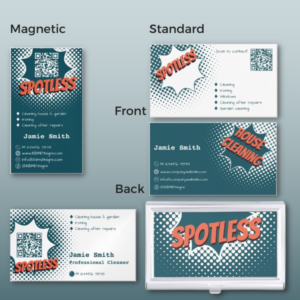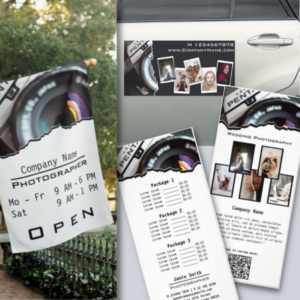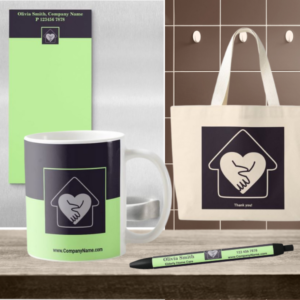What is a brand name? Essentially, it is the cornerstone of a business’s image, encapsulating its values, promises, and personality in a succinct and memorable form.
In the bustling realm of commerce, a brand name is far more than just a sequence of letters strung together. It is a powerful symbol, a beacon that guides consumer perceptions, and a vessel that carries the essence of a company’s identity.

Article Content:
- To Be Precise, What Is a Brand Name?
- Eight Types Of Brand Names And Their Meaning
- How To Create A Brand Name? – Small Business Perspective
- How To Register A Brand Name? And Where To Register It?
- FAQ’s about “What is a brand name?”
1. To Be Precise, What Is a Brand Name?
So, what precisely is a brand name? At its core, it is a unique identifier that distinguishes a product, service, or company from its competitors. It is the verbal and visual representation of a brand’s identity, embodying its ethos, mission, and aspirations. A well-crafted name can evoke emotions, trigger memories, and foster loyalty among consumers, making it a critical asset in the fiercely competitive marketplace.
Establish Recognition and Differentiation
One of the fundamental roles of a brand name is to establish recognition and differentiation. In a sea of options, consumers rely on brand names to guide their choices, seeking familiarity and trustworthiness amidst the abundance of options. A strong name not only grabs attention but also cultivates a sense of trust and credibility, paving the way for consumer engagement and loyalty.
Powerful Communication Tool
Moreover, a name serves as a powerful communication tool, conveying vital information about the brand’s identity, values, and offerings. It encapsulates the essence of a brand in a concise and memorable form, facilitating meaningful connections with consumers on both rational and emotional levels. Whether it’s evoking a sense of luxury, reliability, or innovation, a brand name wields the power to shape perceptions and influence consumer behavior.
Pivotal Role in Brand Building and Strategy
In addition to its communicative function, a brand name also plays a pivotal role in brand building and strategy. It serves as the foundation upon which a brand’s visual identity, messaging, and marketing efforts are built, providing cohesion and consistency across various touch-points. A carefully chosen one aligns with the brand’s positioning and target audience, serving as a catalyst for brand recognition and resonance.
No Easy Feat
However, the process of crafting a compelling name is no easy feat. It requires careful consideration of various factors, including linguistic nuances, cultural connotations, and market dynamics. A successful one strikes a delicate balance between distinctiveness and relevance, capturing the essence of the brand while resonating with its target audience.
Dynamic Entity
Furthermore, the significance of a brand name extends beyond its initial creation. It is a dynamic entity that evolves alongside the brand, adapting to shifting market trends, consumer preferences, and competitive landscapes. Successful brands leverage their brand names as strategic assets, investing in their protection, maintenance, and enhancement to safeguard their market position and foster long-term growth.
It is the embodiment of a brand’s identity, values and aspirations, and is much more than just a label. It serves as a powerful tool for recognition, differentiation and communication, shaping consumer perceptions and driving brand success. In a world flooded with choices, a strong name stands as a beacon of trust, guiding consumers on their journey and forging lasting connections along the way.
2. Eight Types Of Brand Names And Their Meaning
Brand names come in various forms, each with its own unique characteristics and strategic implications. Here are some common types of brand names:
1. Descriptive Brand Names:
Descriptive brand names straightforwardly describe the product, service, or its key benefit. They provide clarity about what the brand offers, making it easier for consumers to understand its purpose. Examples include General Motors, American Airlines, and Best Buy.
2. Abstract Brand Names:
Abstract brand names are coined words or combinations of letters that do not have a direct meaning related to the product or service. They are often created to evoke certain emotions or associations and are open to interpretation. Examples include Google, Kodak, and Nike.
3. Acronym Brand Names:
Acronym brand names are formed by using the initials or parts of the initials of the company’s full name or a longer phrase. They are often used for brevity or to create a distinctive identity. Examples include IBM (International Business Machines), UPS (United Parcel Service), and NASA (National Aeronautics and Space Administration).
4. Founder’s Name Brand Names:
Founder’s name brand names incorporate the name of the founder or a key figure associated with the company. These names can convey a sense of heritage, personal connection, or expertise. Examples include Ford (named after Henry Ford), McDonald’s (named after Ray Kroc and the McDonald brothers), and Disney (named after Walt Disney).
5. Associative Brand Names:
Associative brand names are created by associating the brand with a particular idea, concept, or imagery. They often evoke specific emotions or themes that align with the brand’s identity. Examples include Apple, Dove, and Amazon.
6. Suggestive Brand Names:
Suggestive brand names subtly suggest the product or service’s benefit or attributes without explicitly describing them. They stimulate curiosity and imagination, encouraging consumers to make associations and interpretations. Examples include Netflix, Adobe, and Pinterest.
7. Compound Brand Names:
Compound brand names are formed by combining two or more words to create a new word or phrase. They can be descriptive, associative, or suggestive, depending on the combination used. Examples include Facebook, YouTube, and Starbucks.
8. Generic Brand Names:
Generic brand names are simple and straightforward words that directly describe the product or service. While they lack distinctiveness, they can be effective in communicating the brand’s offerings. Examples include Staples, Subway, and Pizza Hut.
Each type of brand name has its own advantages and considerations, and the choice depends on factors such as brand positioning, target audience, competitive landscape, and overall brand strategy. Ultimately, a successful brand name is one that resonates with consumers, communicates the brand’s essence, and contributes to its long-term success.
3. How To Create A Brand Name? – Small Business Perspective
Creating a brand name for a small business is a crucial step in establishing its identity and gaining recognition in the market. Here are some steps to guide you through the process of creating one:
1. Define Your Brand Identity:
Before brainstorming names, it’s essential to have a clear understanding of your brand’s identity, values, and unique selling points. Consider what sets your business apart from competitors and what message you want to convey to your target audience.
2. Conduct Market Research:
Research your target market to understand their preferences, needs, and language. Analyze competitor names to identify gaps and opportunities in the market. This research will provide valuable insights to guide your naming process.
3. Brainstorm Ideas:
Start generating potential names by brainstorming with your team or collaborating with friends, family, or business partners. Consider using techniques like mind mapping, word association, or random word generation to spark creativity.
4. Focus on Relevance and Differentiation:
Aim for a brand name that is relevant to your business, industry, and target audience. It should reflect your products, services, or core values while also setting you apart from competitors. Avoid generic or overly descriptive names that may blend in with the crowd.
5. Consider Brand Naming Criteria:
Evaluate potential names based on criteria such as memorability, pronounceability, distinctiveness, and scalability. Make sure the name is easy to spell, pronounce, and remember to facilitate word-of-mouth referrals and brand recognition.
6. Check Availability:
Once you have a shortlist of potential names, conduct thorough checks to ensure they are legally available for use. Search for existing trademarks, domain names, and social media handles to avoid potential conflicts and confusion.
7. Test and Gather Feedback:
Test your top brand name choices with your target audience to gather feedback and insights. Conduct surveys, focus groups, or informal interviews to gauge reactions and perceptions. Consider factors such as resonance, relevance, and emotional appeal.
8. Make the Final Decision:
Based on research, feedback, and availability, select the name that best aligns with your business goals and resonates with your target audience. Ensure that the chosen name has the potential to grow and evolve with your business over time.
9. Protect Your Brand:
Once you’ve chosen a name, consider registering it as a trademark to protect it from unauthorized use. Secure relevant domain names and social media handles to establish a consistent online presence and prevent brand dilution.
10. Launch and Promote Your Brand:
Once you’ve finalized your brand name, incorporate it into your marketing materials, website, packaging, and other brand assets. Consistently promote your brand name through various channels to build awareness and loyalty among your target audience.
By following these steps and investing time and effort into the brand naming process, you can create a memorable and impactful name that resonates with your audience and sets your small business up for success.
Discover the Uniqueness of Designs by KBM D3signs on Marketing Materials
Our commitment to our mission is reflected in our exceptional marketing materials designed by KBM D3signs. We strive to simplify the customization process by offering easily customizable templates within our marketing packages. Our belief is rooted in the idea that everyone should have the freedom to choose their preferred colors for a selected design, ensuring that it perfectly matches your vision and needs.
At the Cocoon It! Store by KBM D3signs on Zazzle puts all the branding elements and color schemes in your hands. Whether you’re choosing products with a QR code – where the second color is limited to black or white for optimal contrast – or exploring the vast array of customizable elements through the “Edit further” link, your brand’s unique identity is yours to define.
We use color tools to help you choose the perfect hues, and for additional inspiration, explore our curated collection of color palette ideas. Our commitment to customization goes beyond placeholders-almost all elements can be customized to match your chosen colors.
If you need additional assistance customizing or transferring designs to different products, or if you have a unique vision that requires a custom design, we are just a message away. At Designs by KBM D3signs, we go beyond providing marketing materials; we empower you to shape and showcase your brand with creativity and personalization.
Shop at Zazzle Store
Cocoon It! – Business Cards & Marketing Items
4. How To Register A Brand Name? And Where To Register It?
Registering a brand name involves securing legal protection for your brand identity, ensuring that others cannot use it without your permission. Here’s a step-by-step guide on how to register a brand name and where to register it:
1. Choose a Unique Brand Name:
Before you begin the registration process, ensure that your chosen brand name is unique and not already in use by another company. Conduct a thorough search of existing trademarks, domain names, and business directories to avoid potential conflicts.
2. Trademark Search:
Perform a trademark search to check if your chosen brand name is available for registration. You can conduct a search on the website of the relevant trademark office in your country or use online databases like the United States Patent and Trademark Office (USPTO) or the European Union Intellectual Property Office (EUIPO).
3. File a Trademark Application:
Once you’ve confirmed the availability of your brand name, file a trademark application with the appropriate government authority. The process and requirements may vary depending on your country, but generally, you’ll need to provide details about your brand name, the goods or services it represents, and the class of trademark registration.
4. Pay the Application Fee:
Most trademark offices require a fee to process your trademark application. Be sure to check the fee schedule and payment methods accepted by the relevant authority.
5. Wait for Examination:
After submitting your trademark application and paying the fee, the trademark office will examine your application to ensure that it meets all legal requirements. This process may take several months, during which you may receive requests for additional information or amendments to your application.
6. Publication and Opposition Period:
Once your trademark application is accepted, it will be published in an official gazette or database for a specified period, during which third parties can oppose the registration if they believe it infringes on their existing rights.
7. Registration:
If no oppositions are filed or if any oppositions are successfully resolved in your favor, your trademark will be registered, and you will receive a certificate of registration from the trademark office. This certificate serves as proof of your exclusive rights to use the brand name in connection with the specified goods or services.
8. Maintain and Renew Your Trademark:
Trademarks require maintenance and renewal to remain in force. Be sure to comply with the renewal requirements and pay any renewal fees to keep your trademark registration current.
As for where to register your brand name, it depends on the jurisdiction in which you intend to use and protect your brand. In most cases, you would register your trademark with the national or regional trademark office in your country.
For example:
- In the United States, you would file a trademark application with the United States Patent and Trademark Office (USPTO).
- In the European Union, you would file a trademark application with the European Union Intellectual Property Office (EUIPO).
- In the United Kingdom, you would file a trademark application with the Intellectual Property Office (IPO).
- In other countries, you would register your trademark with the respective national trademark office.
It’s essential to research the specific requirements and procedures for trademark registration in your jurisdiction to ensure compliance with the applicable laws and regulations. If you plan to use your brand name internationally, you may also consider filing for trademark protection in additional countries or regions through mechanisms like the Madrid System for the International Registration of Marks.
-

What Is A Gift Voucher? An SMB Offline Marketing Perspective
Read the post …: What Is A Gift Voucher? An SMB Offline Marketing Perspective -

What is a Planner? A Small Business Perspective
Read the post …: What is a Planner? A Small Business Perspective -

Business Holiday Cards, Why? & How to Maximize Their Impact
Read the post …: Business Holiday Cards, Why? & How to Maximize Their Impact
5. FAQ’s About “What Is a Brand Name?”
A brand name is a unique identifier that distinguishes a product, service, or company from its competitors. It encapsulates the essence of a brand’s identity, values, and aspirations.
A brand name is important because it helps establish recognition, differentiation, and communication in the marketplace. It influences consumer perceptions, fosters trust, and contributes to brand loyalty and success.
To create a brand name, start by defining your brand identity and conducting market research. Brainstorm ideas, focusing on relevance and differentiation. Check availability and legal considerations, then test and gather feedback before making a final decision.
es, you can trademark your brand name to secure legal protection and exclusive rights to use it in connection with specific goods or services. Trademark registration provides a basis for enforcement against unauthorized use by others.
To register your brand name, file a trademark application with the appropriate government authority, such as the United States Patent and Trademark Office (USPTO) or the European Union Intellectual Property Office (EUIPO). Follow the registration process, pay the application fee, and comply with examination and publication requirements.
Brand names can be descriptive, abstract, acronymic, founder’s name-based, associative, suggestive, compound, or generic, each with its own characteristics and strategic implications.
Protect your brand name by registering it as a trademark, securing relevant domain names and social media handles, monitoring for unauthorized use, and enforcing your rights against infringement or misuse.
Yes, you can change your brand name if necessary, but it should be done carefully to avoid confusion or loss of brand equity. Consider factors such as market perception, legal implications, and rebranding costs before making a decision.
Promote your brand name through various marketing channels, including advertising, social media, content marketing, public relations, and brand partnerships. Consistently communicate your brand’s values, benefits, and unique selling propositions to your target audience.
-

Brand Identity Elements, How to Shape Your Brand Personality
Read the post …: Brand Identity Elements, How to Shape Your Brand Personality -

What is a Tag Line? Its Variations, Uses, Protection, FAQs
Read the post …: What is a Tag Line? Its Variations, Uses, Protection, FAQs











